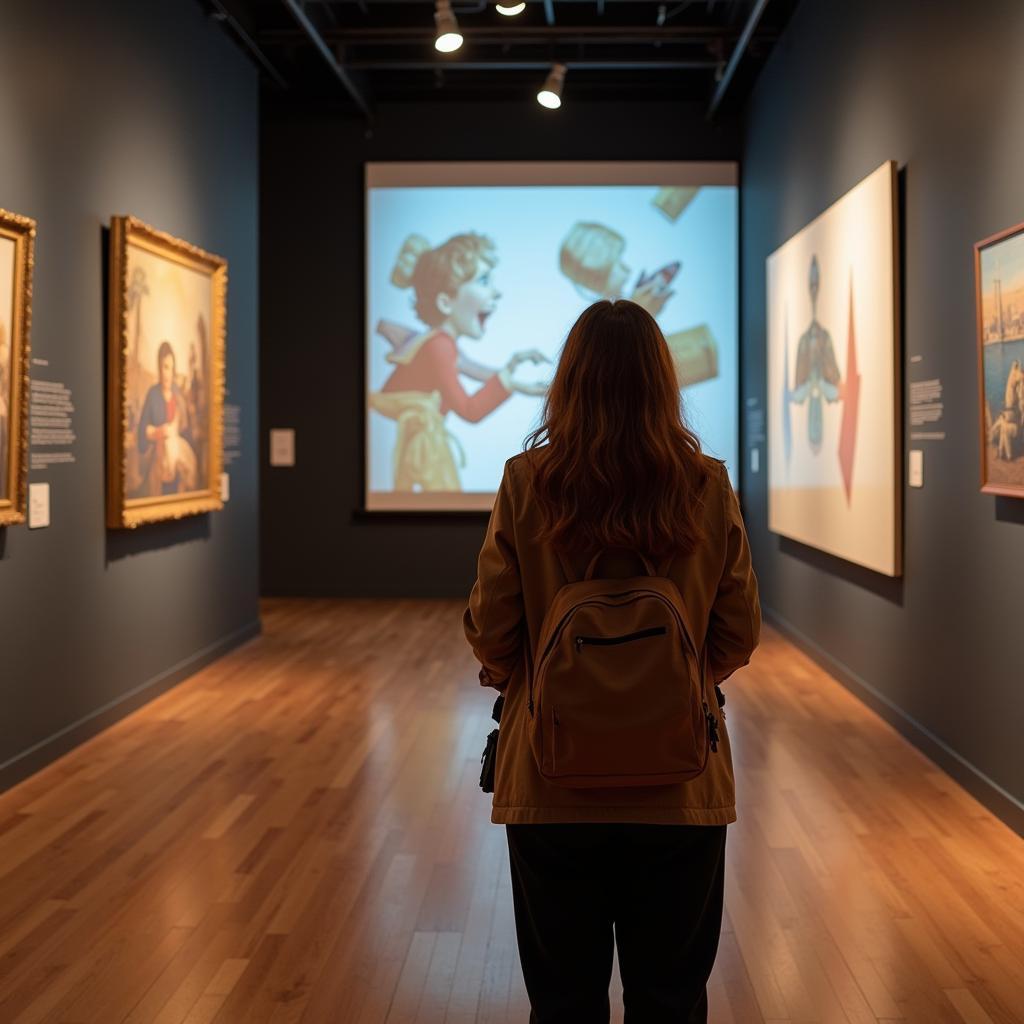Ash Springs Rock Art Site: A Journey Through Ancient History
The Ash Springs Rock Art Site is a mesmerizing tapestry of ancient artistry etched onto the walls of a natural cave in southeastern Nevada. This remarkable archaeological site, dating back thousands of years, provides a captivating glimpse into the lives and beliefs of the ancient inhabitants of the Great Basin. This article delves into the intriguing history, significance, and artistic expressions that make Ash Springs Rock Art Site a treasure trove of human ingenuity.
A Glimpse into the Past: The History of Ash Springs Rock Art
Nestled within the rugged landscape of the Great Basin, Ash Springs Rock Art Site offers a unique opportunity to connect with the past. The cave, a natural shelter formed by erosion, served as a canvas for generations of ancient artists. Evidence suggests that the site was utilized by the ancient inhabitants of the region, known as the Paiute and Shoshone people, for over 10,000 years. The rock art found here speaks volumes about their traditions, beliefs, and daily life.
Unraveling the Mysteries: Interpreting the Art
The art at Ash Springs Rock Art Site is a rich tapestry of various motifs, each carrying its own cultural and historical significance. The most prominent among these are the pictographs, painted images created with pigments derived from natural sources. These images depict a wide range of subjects, including:
- Geometric patterns: These intricate designs, often composed of circles, lines, and zigzags, are believed to represent abstract concepts, cosmology, and spiritual beliefs.
- Human figures: Depictions of human figures, often in simple forms or stylized representations, are thought to portray individuals or ancestors.
- Animal figures: Images of animals such as bighorn sheep, deer, and birds reflect the importance of hunting and animal symbolism in the culture.
- Spiritual symbols: Some motifs appear to represent spiritual entities or deities, suggesting a connection to the spirit world.
Preserving the Legacy: The Importance of Conservation
The preservation of Ash Springs Rock Art Site is paramount to safeguarding this invaluable cultural heritage. The delicate nature of the artwork, vulnerable to erosion, vandalism, and environmental damage, requires careful preservation efforts. The Bureau of Land Management (BLM), responsible for managing the site, has implemented strict measures to protect the art, including:
- Limited access: Visitors are only allowed to enter the site with a guided tour, ensuring the integrity of the artwork.
- Minimizing foot traffic: Designated paths and walkways minimize impact on the cave environment.
- Monitoring and surveillance: Regular monitoring helps detect and address any potential threats to the site.
An Inspiring Journey: Visiting Ash Springs Rock Art Site
Visiting Ash Springs Rock Art Site offers a unique opportunity to engage with the ancient past and connect with the artistic legacy of the Paiute and Shoshone people. Guided tours provide insights into the historical context, cultural significance, and artistic techniques employed in creating these remarkable images.
Here are some tips for visiting Ash Springs Rock Art Site:
- Plan your trip in advance: Obtain a permit and schedule your tour with the Bureau of Land Management.
- Be respectful of the site: Follow guidelines, stay on designated paths, and avoid touching the artwork.
- Learn about the history and culture: Research the Paiute and Shoshone people to enhance your appreciation of the artwork.
A Window to the Past: A Legacy Worth Preserving
Ash Springs Rock Art Site stands as a testament to the enduring spirit of the Paiute and Shoshone people and their profound connection to the land. These ancient images offer a captivating glimpse into the human experience, reminding us of our shared history and the importance of preserving our cultural heritage for future generations.
“The rock art at Ash Springs is a powerful reminder of the interconnectedness of all things, and the enduring power of human creativity.” – Dr. Amelia Flores, Archaeologist
“These ancient images tell stories that have been passed down for millennia, providing a valuable window into the beliefs, practices, and artistic expression of our ancestors.” – Chief Michael Thunder, Paiute Tribe
FAQ
Q: When was the Ash Springs Rock Art Site discovered?
A: The site was officially discovered in the early 20th century by a local rancher, but it is believed to have been known to the Paiute and Shoshone people for thousands of years.
Q: What type of pigments were used to create the rock art?
A: The artists used natural pigments derived from minerals, plants, and other materials found in the surrounding environment.
Q: Is it possible to visit the site without a guided tour?
A: No, access to the site is strictly controlled to protect the integrity of the artwork. Visitors must obtain a permit and schedule a guided tour.
Q: What are the best times to visit Ash Springs Rock Art Site?
A: The best time to visit is during the spring and fall, when the weather is mild and pleasant.
Q: How can I learn more about the Paiute and Shoshone people?
A: There are numerous resources available online and in libraries, including books, documentaries, and websites dedicated to the history and culture of these tribes.
Q: How can I contribute to the preservation of the Ash Springs Rock Art Site?
A: You can support the Bureau of Land Management’s efforts by donating to their conservation programs, advocating for the site’s protection, and educating others about its importance.
Q: Is there anything else you can tell me about Ash Springs Rock Art Site?
A: Yes! The site is home to a variety of other archaeological features, such as petroglyphs, pottery shards, and tools.
Q: Where can I find more information about rock art sites in Nevada?
A: The Bureau of Land Management and the Nevada State Museum have websites and resources dedicated to rock art in the state.


